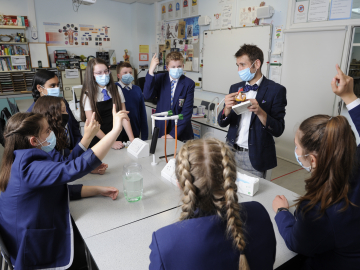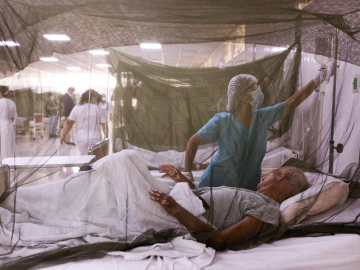It's Time to Tackle Antimicrobial Resistance
Unchecked, antimicrobial resistant infections are projected to kill some 10 million people around the world by 2050. And even countries with strong health systems are coming up short in their efforts to combat the problem, according to a recent WHO assessment. The upcoming World Health Assembly May 18–26 will provide a critical opportunity for global community to address this threat.
Infections resistant to antimicrobial medicines are harder to treat and control; illness is prolonged; and the risk of death is greater. Today, resistant infections claim about 50,000 lives every year in the US and the EU combined. Keiji Fukuda, MD, MPH, WHO’s assistant director-general for health security, describes antimicrobial resistance as “the single greatest challenge in infectious diseases today.”
One specific example of the global threat posed by antimicrobial resistance: A highly contagious and hard to treat (~30-50% cure rate) extremely drug resistant tuberculosis (XDR TB) has now been detected in over 91 countries, including US, Canada, and most European countries.
The WHO assessment, Worldwide Country Situation Analysis: Response to Antimicrobial Resistance, examined health systems for building blocks required to curb resistance in 133 countries. The report reveals that systems to combat antimicrobial resistance are mostly lacking, even in countries with strong health systems. Key findings include:
- Comprehensive national plans: Only 34 out of 133 countries participating in the survey demonstrated a comprehensive national plan to fight antimicrobial resistance.
- Surveillance and laboratory capacity: The extent of surveillance varied by pathogen and by country, but overall, monitoring antimicrobial resistance is infrequent. In many countries, poor laboratory capacity, infrastructure, and data management prevent effective surveillance.
- Access to high-quality antimicrobials: In 3 out of 6 regions less than 50% of participating countries provide a national regulatory authority to assess medicines—and counterfeit medicines plague the same regions.
- Systems for monitoring of antimicrobial use: Few countries are monitoring use of antimicrobials, and in many countries antibiotics are available over the counter.
- Lack of programs to prevent and control hospital-acquired infections: In 3 out of 6 regions less than 50% of participating countries had an infection prevention and control program in place.
- Public awareness is low in all regions, and information campaigns on the use of antimicrobials are infrequent (with the exception of Europe).
There are a couple of things to keep in mind when interpreting this report: first, given the survey’s 2-year duration some countries have made progress since participating in the survey; second, the great variability in response rates (from 17% in the African region to 100% in the Southeast Asia region) prevents regional comparison.
Still, these data make a strong case for the WHO’s global action plan to combat antimicrobial resistance, to be submitted at the 68th World Health Assembly May 18-26. The plan sets out 5 strategic objectives to strengthen health systems’ response to this global threat, including improving awareness, strengthening surveillance, reducing incidence of infection, devising guides for antimicrobial use, and ensuring new medicines. The Worldwide Country Situation Analysis: The response to the antimicrobial resistance report provides an excellent benchmark to measure future progress in curbing antimicrobial resistance, if WHO member states ratify the global action plan and embark on addressing antimicrobial resistance.
Ultimately, the responsibility rests with individual countries to implement recommendations and invest in necessary surveillance and reporting systems. While onerous, those are required to preserve modern medicine, spare human suffering, and even reduce health care spending. As WHO’s Director-General Margaret Chan, MD, stresses, “In the absence of urgent corrective and protective actions, the world is heading towards a post-antibiotic era, in which many common infections will no longer have a cure and, once again, kill unabated.”
Marija Cemma (@CemmaM) is a PhD Candidate at University of Toronto and Hospital for Sick Children, past Global Health Fellow with the Program on Global Policy and Governance at Duke University and WHO intern. She worked on the country-situation analysis project with the antimicrobial resistance team at the WHO from April to June 2014.
Image by Samantha Celera, Courtesy of Flickr. Creative Commons License.




